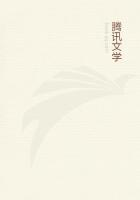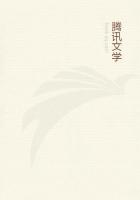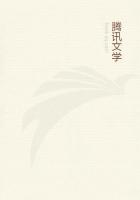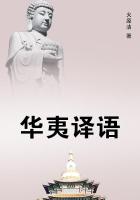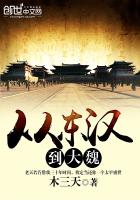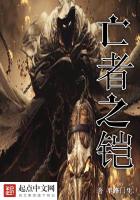Supposing that all the Osmiae possessed the necessary strength of jaw as well as the instinct for this sideward boring, it is clear that egress from each cell through a special window would be much more advantageous than egress through the common door. The Bee could attend to his release as soon as he was hatched, instead of postponing it until after the emancipation of those who come before him; he would thus escape long waits, which too often prove fatal. In point of fact, it is no uncommon thing to find bramble-stalks in which several Osmiae have died in their cells, because the upper storeys were not vacated in time. Yes, there would be a precious advantage in that lateral opening, which would not leave each occupant at the mercy of his environment: many die that would not die. All the Osmiae, when compelled by circumstances, resort to this supreme method; all have the instinct for lateral boring; but very few are able to carry the work through. Only the favourites of fate succeed, those more generously endowed with strength and perseverance.
If the famous law of natural selection, which is said to govern and transform the world, had any sure foundation; if really the fittest removed the less fit from the scene; if the future were to the strongest, to the most industrious, surely the race of Osmiae, which has been perforating bramble-stumps for ages, should by this time have allowed its weaker members, who go on obstinately using the common outlet, to die out and should have replaced them, down to the very last one, by the stalwart drillers of side-openings. There is an opportunity here for immense progress; the insect is on the verge of it and is unable to cross the narrow intervening line. Selection has had ample time to make its choice; and yet, though there be a few successes, the failures exceed them in very large measure. The race of the strong has not abolished the race of the weak: it remains inferior in numbers, as doubtless it has been since all time. The law of natural selection impresses me with the vastness of its scope;but, whenever I try to apply it to actual facts, it leaves me whirling in space, with nothing to help me to interpret realities. It is magnificent in theory, but it is a mere gas-bubble in the face of existing conditions. It is majestic, but sterile. Then where is the answer to the riddle of the world? Who knows? Who will ever know?
Let us waste no more time in this darkness, which idle theorizing will not dispel; let us return to facts, humble facts, the only ground that does not give way under our feet. The Osmia respects her neighbour's cocoon; and her scruples are so great that, after vainly trying to slip between that cocoon and the wall, or else to open a lateral outlet, she lets herself die in her cell rather than effect an egress by forcing her way through the occupied cells. When the cocoon that blocks the way contains a dead instead of a live grub, will the result be the same?
In my glass tubes, I let Osmia-cocoons containing a live grub alternate with Osmia-cocoons in which the grub has been asphyxiated by the fumes of sulphocarbonic acid. As usual, the storeys are separated by disks of sorghum. The anchorites, when hatched, do not hesitate long. Once the partition is pierced, they attack the dead cocoons, go right through them, reducing the dead grub, now dry and shrivelled, to dust, and at last emerge, after wrecking everything in their path. The dead cocoons, therefore, are not spared; they are treated as would be any other obstacle capable of attack by the mandibles. The Osmia looks upon them as a mere barricade to be ruthlessly overturned. How is she apprised that the cocoon, which has undergone no outward change, contains a dead and not a live grub? It is certainly not by sight. Can it be by sense of smell? I am always a little suspicious of that sense of smell of which we do not know the seat and which we introduce on the slightest provocation as a convenient explanation of that which may transcend our explanatory powers.
My next test is made with a string of live cocoons. Of course, Icannot take all these from the same species, for then the experiment would not differ from the one which we have already witnessed; I take them from two different species which leave their bramble-stem at separate periods. Moreover, these cocoons must have nearly the same diameter to allow of their being stacked in a tube without leaving an empty space between them and the wall. The two species adopted are Solenius vagus, which quits the bramble at the end of June, and Osmia detrita, which comes a little earlier, in the first fortnight of the same month. I therefore alternate Osmia-cocoons and Solenius-cocoons, with the latter at the top of the series, either in glass tubes or between two bramble-troughs joined into a cylinder.
The result of this promiscuity is striking. The Osmiae, which mature earlier, emerge; and the Solenius-cocoons, as well as their inhabitants, which by this time have reached the perfect stage, are reduced to shreds, to dust, wherein it is impossible for me to recognize a vestige, save perhaps here and there a head, of the exterminated unfortunates. The Osmia, therefore, has not respected the live cocoons of a foreign species: she has passed out over the bodies of the intervening Solenii. Did I say passed over their bodies? She has passed through them, crunched the laggards between her jaws, treated them as cavalierly as she treats my disks. And yet those barricades were alive. No matter: when her hour came, the Osmia went ahead, destroying everything upon her road. Here, at any rate, is a law on which we can rely: the supreme indifference of the animal to all that does not form part of itself and its race.

